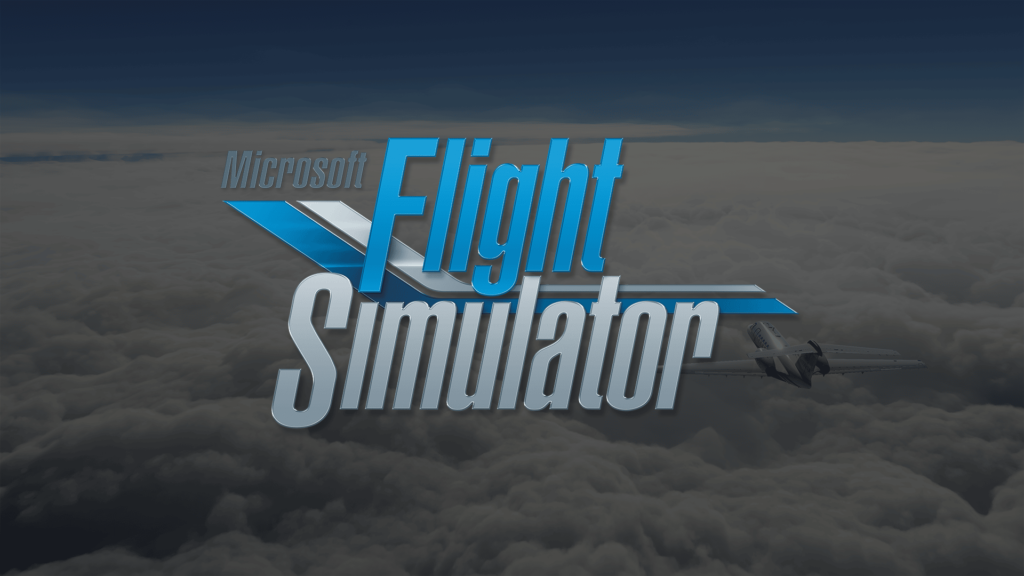
Wie angekündigt, wurde gerade die nächste Open-Beta-Runde für den Microsoft Flight Simulator eingeläutet. Diesmal geht das „Aircraft and Avionics Update“ (AAU) in die 2. Runde. Hier haben sich die Jungs von Working Title die Avionik der Standardflugzeuge Boeing 787-10 und Boeing 747-8i vorgenommen. Und einer bestimmten Zielgruppe wird die Open Beta ebenfalls empfohlen.
WorkingTitle fingen als Modder an, jetzt sind sie die Avionik-Experten bei Microsoft und Asobo. Waren im ersten AAU noch die kleinen Flugzeuge samt Avionik dran, geht es jetzt an die Heavies. Wie im letzten Q&A angekündigt, kümmert sich die Truppe um die Boeing 787-10 und Boeing 747-8i. In der heute erschienenen Open Beta des AAU2 können die Verbesserungen jetzt getestet werden (siehe Changelog) unten. Aber auch die TBM und Longitude haben Updates erhalten.
Bisher gab es für die 747 und die 787 Freeware-Mods, die für Verbesserungen an den Standard-Flugzeugen sorgen. Bei der 747 kümmert sich Salty darum, beim Dreamliner die Leute der Heavy Division.
Außerdem gibt es noch eine Nutzungsempfehlung für alle, die in den letzten Wochen von der „Your Bandwidth ist too low/Ihre Bandbreite ist zu niedrig“-Meldung gequält wurden. Zwar ist in der Open Beta kein konkreter Fix zu erwarten, Microsoft will aber über die Beta Telemetrie zur Auswertung sammeln, heißt es in der Meldung zum Release.
Die Open Beta kann über die XBox Insider App aktiviert werden. Sobald sie dort aktiviert ist, lädt der Sim die Open Beta. Dort kann die Beta auch wieder deaktiviert werden.
RELEASE NOTES 1.33.3.0
If you are playing on PC, outdated packages in your community folder may have an unexpected impact on the title’s performance and behavior.
If you suffer from stability issues or long loading times, move your community package(s) to another folder before relaunching the title.
Note: if you have been experiencing Offline/Low Bandwidth 3 error messages recently, we encourage you to enroll in this public test. The 1.33.3.0 build does not contain any fixes for this issue, but we are using the beta to gather telemetry for a future resolution.
Glass Cockpits
Garmin G3000 / G5000
- Fixed a bug where removing the traffic and relative terrain indicators from the navigation map would leave behind an empty but visible container
- Fixed a bug where TAWS touchdown callouts were not using nearest runway elevation
- Fixed a small inaccuracy in the lateral deviation scale above the PFD HSI Map
- The autopilot/flight director HDG mode now only reverses turn direction if the selected heading is turned past 330 degrees away from the airplane’s current heading
Garmin GNS430W / GNS530W
- Fixed some page navigation issues where the right knob push would not close dialogs
WT21
- PFD: Fixed an issue where the wind indicator would spin to the wrong direction
- FMS: Fix edge case when inserting waypoint at end of flight plan
- FMS: Fix default hold inbound course to match previous leg outbound course
Aircraft
Boeing 787-10 / Boeing 747-8i
- Comprehensive visual overhaul of the avionics for accurate font, symbology, look, operation, and feel
- Visually accurate PFD supporting rising runway indication, ILS symbology, FPV and much more
- Independent MFD/ND/CDU Screens supporting view pane system management
- CDU supporting advanced flight plan management and performance initialization features
- Advanced flight plan support, including arcs, radius-to-fix, intercepts, holds, procedure turns, and missed approaches
- Alternate diversions with customizable profiles for the predictions of ETA, distance and fuel remaining to multiple airports
- Integrated checklists on the MFD
- Full synoptics pages indicating status of their respective systems
- Reworked EICAS supporting full engine indication display and a whole suite of CAS messages
- Performance based VNAV with idle descent capabilities considering aircraft state, temperature and wind forecast
- Advanced VNAV configuration with ECON/selected modes, configuration of speed restrictions and speed transitions
- Fully featured autothrottle system with correct AT modes/functionality and communication to and from the FMS
- Thrust management system supporting cost index, thrust limitation and assumed temperature derate
- Fully featured autopilot including AUTOLAND, FLARE and ROLLOUT modes
- Integrated Approach Navigation (IAN) functionality and indications for straight-in non-precision approaches
- RNP/ANP indications
- TCAS II system supporting traffic advisories and RA indications on the ND
- Revised Engine and Flight Model bringing many values closer to book, fuel consumption, engine power settings, climb rates, speeds, and attitudes
- Fuel System overhaul supporting proper pump operation on APU Start
- Support for Hydraulic Demand pumps
- Overhaul of electrical system with correct bus connection logic and adjusted power consumption
- Functional GPS and IRS navigation systems
- Added more functionality to the overhead panels with accurate indications on the electrics, hydraulics, fuel and ECS panels
- Adjusted overhead panels logic and lighting accordingly
- 787: Revision of the plane’s soundscape
- 787: Overhauled HUD supporting nearly all real-world symbology, including both Full and Decluttered modes, runway edge lines, FPV acceleration and speed error indications, TOGA and G/S reference lines, and unusual attitudes
- 787: New fly-by-wire system simulating the authentic C*U law with trim speed unique to Boeing aircraft
- Known Limitations:
- Both: Environmental Control Systems (Air Conditioning) are work in progress and Synoptics for those are disabled right now
- 787: EFB for performance calculations not yet available. Calculations happen on the CDU
- 747: Pedestal CDU (3rd) mirrors the left CDU for performance reasons
- 747: Electrical transfer busses powering other main busses
- 747: Fuel System overhaul in progress. Synoptics disabled
Cessna Citation Longitude
- Fixed thrust reverser animations so that the buckets are only shown as deployed when reverse thrust is actually engaged
- Added mitigation to prevent the engine and APU graphics on the Fuel, Hydraulics, ECS, and Anti-Ice Synoptic Panes from rendering incorrectly
- The rudder can now be powered by both the A and B hydraulic systems and no longer requires the left engine to be running
- Bearing Pointer information is no longer missing when the PFD is in Split mode
- Fixed improper placement of the NAV/DME information banner when the PFD was in Split mode
- Fixed a bug where Bearing Pointer 2 information was displayed in the incorrect location when Bearing Pointer 1 was turned off
- Changing the selected airspeed while autothrottle is on no longer causes the autothrottle to command sudden changes in throttle lever position
- Added support for the dual-cue flight director format
- The PFD roll indicator no longer renders the roll scale arc
Daher TBM 930
- The minimums alerter now works correctly when using radio minimums


Die Verbesserungen bei der 787-100 und 747-8 machen Laune. Ich mag es kontinuierlich Updates zu sehen und nicht wie bei anderen Plattformen, „out of the blue“ nachdem ich mich eigentlich schon abgefunden habe, und das dann publizierte Update irgendwie gar nicht so viel änderte…